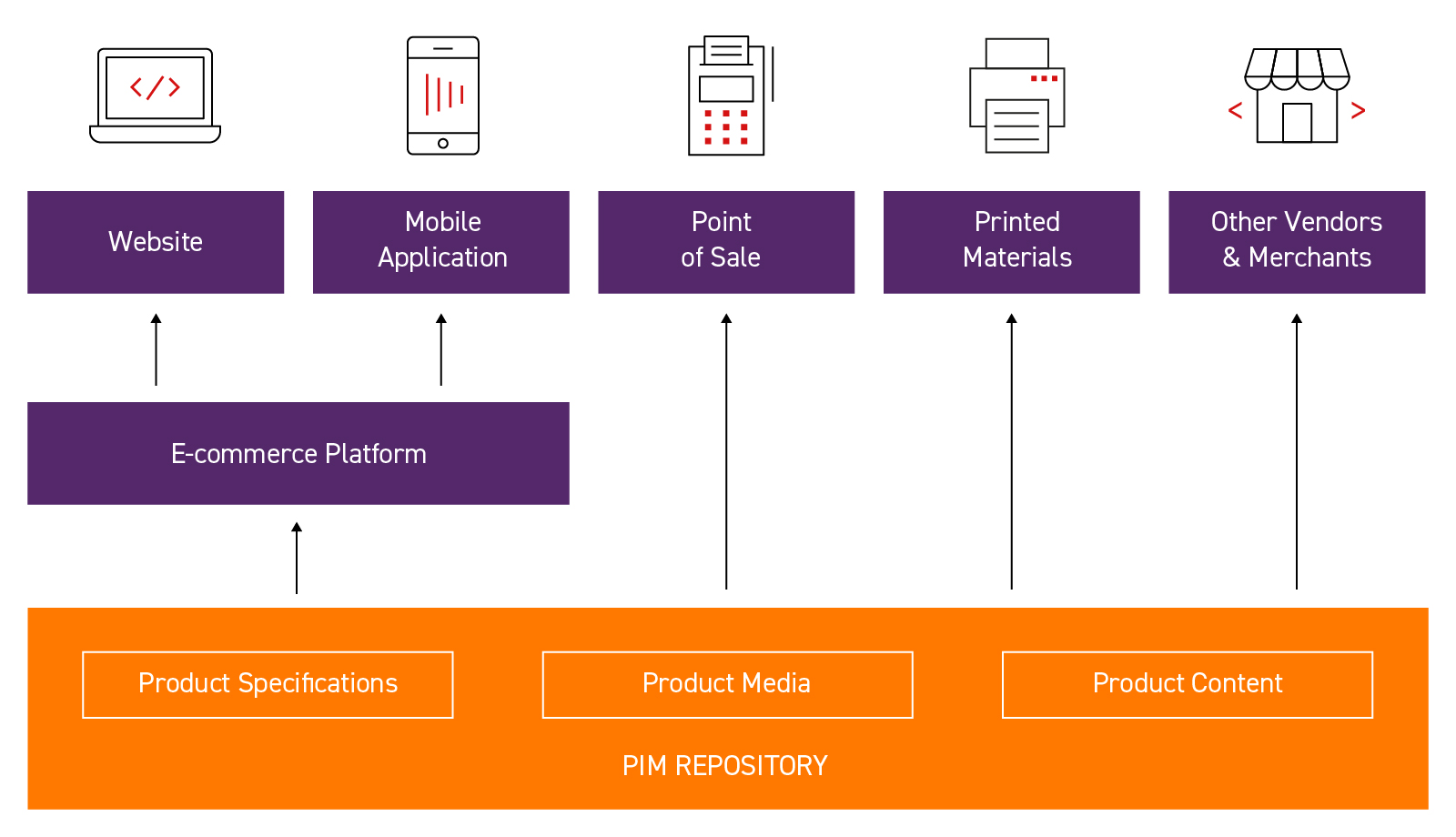Data Syndication: Effective Information Management
Reliable and relevant information is a true asset. For companies operating in various industries, it often constitutes a significant factor in successfully communicating with customers and partners. Product Information Management (PIM) systems serve as tools for optimal information management, enabling organizations to gather, manage, and distribute product data efficiently.
The process responsible for effective data distribution is content syndication, also known as consolidation. Through this process, companies can reach their customers across different platforms and sales channels, as well as provide accurate, up-to-date product descriptions to partners responsible for sales. This makes data syndication a key aspect of effectively utilizing PIM systems.
What is Data Syndication in PIM Systems?
Imagine managing a company that sells furniture in an online store. You have a database with all the products, such as sofas, tables, and beds, sourced from various suppliers. You want information about these products to appear not only on your website but also on the websites of sales partners, such as e-commerce platforms, marketplaces, mobile apps, or furniture store websites.
Instead of sharing product information by sending it to each partner individually, you can utilize syndicated data and content. Simply inputting a new product into your PIM automatically sends information about that product to all the companies you collaborate with. This ensures that partner websites present current and consistent information about the furniture, facilitating customer purchases.
In this scenario, the PIM system serves as a central repository, comparable to a headquarters managing (in this case, product) data. Updates are sent through the PIM automatically – in the form of syndicated data – to all stores selling your furniture, ensuring data consistency, brand consistency and faciliating customers in both finding and purchasing products.

Product Information Management – Benefits of Content Syndication
There are numerous benefits to syndicated data via PIM systems that are essential for effective product data management. Let’s explore the most important ones.
Information Consistency
PIM systems serve as central repositories of product data, storing all information such as product descriptions, images, technical specifications, etc. Through the PIM system’s syndicated data, all distribution channels receive the same updated data about the original article. This ensures consistency of product information across different sales platforms, eliminating the risk of discrepancies or errors.
Time Savings
Thanks to syndicated data, a company saves time that would normally be spent on manually updating data on various sales platforms. Introducing a new product into the PIM system automatically results in its availability on all distribution channels, speeding up the process of introducing new products to the market.
Increased Sales Efficiency
By providing consistent and content-rich product information across various sales channels, data syndication from the PIM system supports increased sales efficiency. In also encourages positive consumer behavior, as customers have easier access to comprehensive product information, facilitating purchase decisions and increasing the likelihood of transaction finalization.
Better Data Control
Implementing a PIM system allows for better control over product data, both in terms of quality and compliance with industry regulations. Through data consolidation from the central PIM system, a company ensures that product data presented in various locations is always up-to-date and compliant with guidelines.

Product Data Syndication Challenges
While data syndication brings many benefits, there are several issues worth paying attention to.
Diverse Data Formats
Different sales channels may require different product data formats. For example, one platform may prefer specific image sizes, while another may require detailed product descriptions, full of details and technical parameters. The need to convert data between different formats may require specialized support.
Compliance with Regulations
In some industries, such as pharmaceuticals, food, or the children’s products sector, there are strict regulations regarding the presentation of product information. Product data syndication must take these regulations into account and ensure compliance with all legal and regulatory requirements, which may require additional attention, especially for the distribution of international products.
Data Security
Product data stored in PIM systems may contain sensitive information such as prices, personal data, or technical details. The security of this data is a key challenge, especially when transmitting it between different sales platforms. It is necessary to implement appropriate security measures, such as data encryption and access monitoring, to prevent leaks or security breaches.
Integration with Existing Systems
Introducing a PIM system into a company’s existing IT infrastructure can be complex and require integration with existing systems, such as ERP or CRM systems. Ensuring smooth integration may pose technical and organizational challenges, especially in large and complex IT environments. In such cases, it is extremely important to carry out the implementation with an experienced technology partner.
System Performance
Large amounts of data and frequent updates can affect the performance of the PIM system, especially when using multiple distribution channels and large transaction volumes. It is necessary to ensure adequate system availability and performance to ensure operation continuity and data consolidation processes’ effectiveness.

Content Syndication – Where to Start?
Getting started with syndicated data and content may be easier when you have a clearly defined plan and strategy. Here are a few steps to get started.
Define Goals
Start by defining the goals you want to achieve through content syndication. Do you want to increase the visibility of your products, improve information consistency across different platforms, or perhaps increase sales? Clearly defined goals will help you focus on relevant actions.
Choose the Right Tool
Choose a tool that best suits your business needs and allows for effective product data consolidation. Conduct a thorough analysis of the various available options and select a solution that best meets your requirements.
Gather and Prepare Data
Before starting content syndication, ensure that your product data is comprehensive, accurate, and organized. Collect all necessary product information, such as descriptions, images, videos, technical specifications, etc., and prepare them for distribution. This will help avoid content duplication.

Identify Distribution Channels
Identify the distribution channels where you will make your products available. This could be an e-commerce platform, online store, mobile apps, marketplaces, retailer websites, or B2B platforms. Check if you need different language versions and which legal regulations you need to comply with.
Configure the PIM system
Configure the PIM tool according to your company’s needs and the requirements of individual distribution channels. Define data structures, map information fields, set rules for automatic data updates, etc.
Start the Process
After preparing the data and configuring the PIM system, you can start the product data syndication process. Configure workflows, update schedules, and other parameters necessary for effective data distribution to selected channels.
Monitoring and Optimization
Regularly monitor syndication results to assess its effectiveness and identify areas for optimization. Analyze data on distribution channel performance, information consistency, or sales indicators, and take action based on this information.
In summary, product data syndication in PIM systems plays a crucial role in effective product information management. With syndicated data, updates are automatically sent to different sales channels, so organizations can ensure data consistency, save time, and increase sales opportunities.
Despite some challenges, data syndication remains an integral part of data management strategies in today’s business environment, supporting organizations in achieving success in competitive markets. Starting this process may seem complicated, but with a clear plan, appropriate tools, and technological support, you can effectively manage the distribution of product data across







